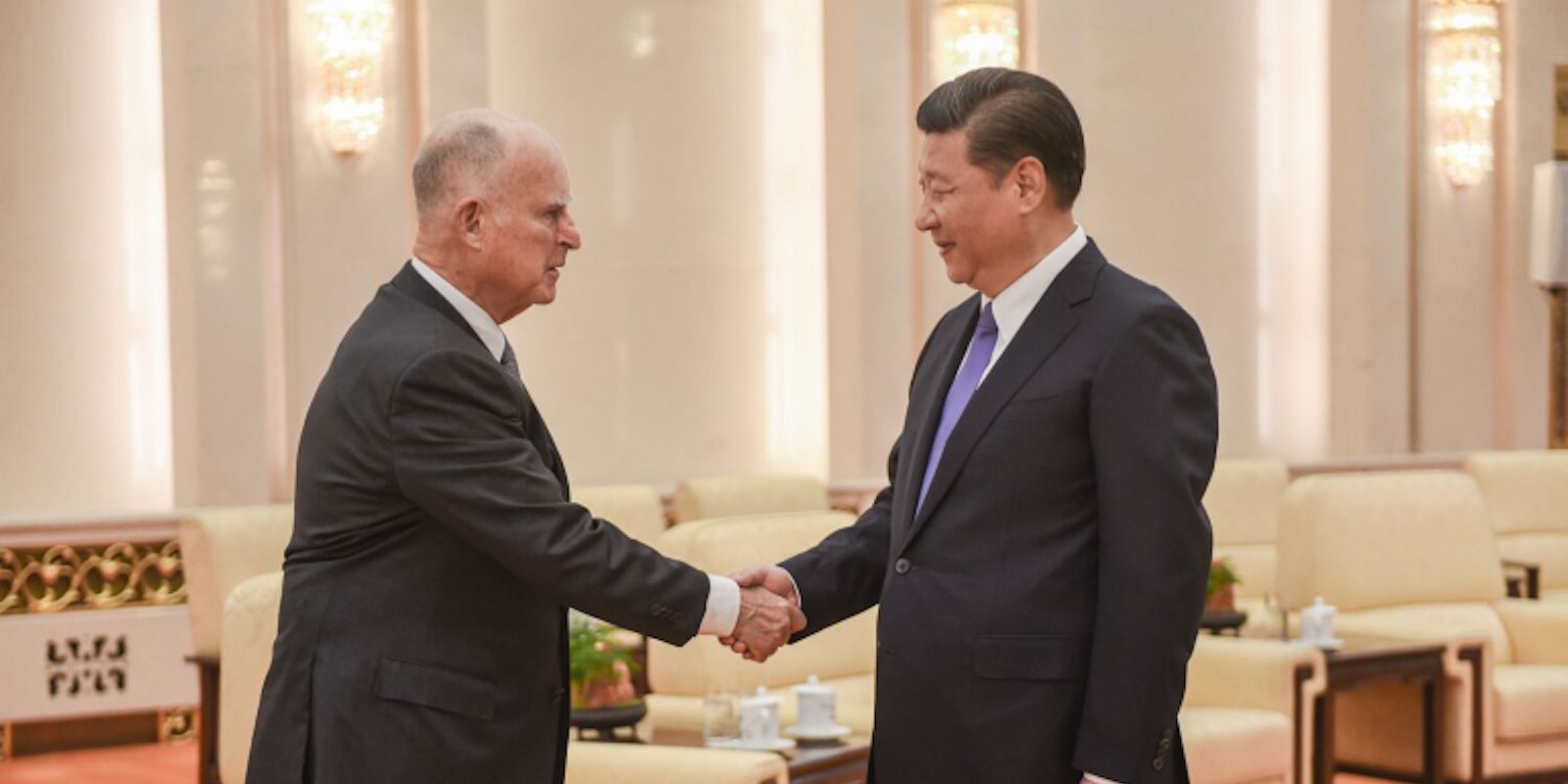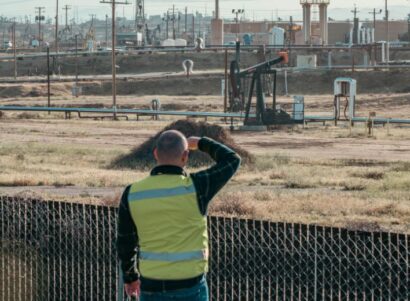Associate Researcher | Environmental Health Sciences, School of Public Health, UC Berkeley
Affiliate | Energy Technologies Area, Lawrence Berkeley National Lab
Above: California Governor Jerry Brown meets with Chinese President Xi Jinping. Photo by Aaron Berkovich.
As the Trump administration’s isolationist, denial-driven move to pull out of the Paris Climate Accord fades behind each new crop of scandal and crisis headlines, the continuing flow of public statements around international climate change agreements indicate an important and meaningful shift for science and the planet. Several major alternative pacts — shadow agreements — leverage the power of individual states, local governments, and businesses to follow the scientific evidence and stand firmly on the right side of history.
In a statement announcing the new “United States Climate Alliance” the day a coalition of states dedicated to meeting or exceeding the standards laid out in the Paris accords, California Governor Jerry Brown said the Trump administration’s failure to acknowledge human-driven climate change and its impact “is the exact opposite of virtually all scientific and worldwide opinion.”
And as New York Governor Andrew Cuomo signed an Executive Order stating New York’s support for aggressive climate goals and the new U.S. Alliance, he asserted: “We will not ignore the science and reality of climate change.”
The momentum has built steadily since then. As of last Tuesday, the new Alliance had already added 10 new state members.
A similar shadow coalition is already underway on a global scale. The Under2Coalition is a “worldwide pact focused on getting cities, states and countries to limit greenhouse gas emissions to 2 tons per capita or 80 to 95 percent below 1990 levels by 2050,” according to the organization’s website. It’s a structural framework onto which a variety of governmental actors can make meaningful evidence-based policy commitments. Launched by the states of California and Baden-Württemberg, Germany, the pact already represents “more than US$27.5 trillion in combined GDP — more than one-third of the global economy,” the organization says. And it is likely to add to its current 170 signatories as various government entities decide on a course of action.
In yet a third large-scale, fast-growing rebellion in the name of science-based action, Michael Bloomberg, financial and philanthropic giant and former New York City mayor, is leading a group of both public- and private-sector entities in a “parallel pact” to uphold the U.S. commitment to the Paris Agreement. Dubbed “We Are Still In,” the coalition of mayors, governors, universities, and businesses now includes tech giants Amazon, Google, Lyft, and others, according to a statement released Monday. The group is working on creating a mechanism by which their coalition, a non-country, can integrate into the Paris Agreement.
These actions and their accompanying public statements show scientific evidence driving policies that protect the planet for future generations. The system is working: A finding may not make a difference the day a new study is published or even the year after, but continued rigorous inquiry ultimately builds a credible body of evidence to help society make informed choices.
Moreover, these developments reflect a notable shift in how science interfaces with policy development. The gold standard for the regulation of national- and international-scale environmental and public health issues is typically to secure them at the federal level, given that such issues don’t stop at geopolitical borders. However, with little support from the Trump administration in domestic and international environmental, climate and health matters, scientists and policy makers have begun to embrace non-federally driven, inter-state policy coalitions on the international stage.
The Trump administration and other supporters will ultimately pay the political, societal, and historical costs of attempting to lead the U.S. astray. And no one knows how long it will take to dig America out of the diplomatic and economic repercussions of this internationally embarrassing set-back. But, as the 195 nations who signed onto the original Paris Accord showed the world, there is neither the collective will nor the time to slow the push toward the Accord’s goals.
So, as the new shadow environmental order takes shape, we urge our science colleagues to continue to courageously expand the evidence base; clearly, the majority of the nation is listening. And communication is paramount. Without a federal agency actively stitching together the science-policy nexus, scientific organizations such as ours must work harder to ensure that our findings are understandable and are put into the hands of those who value evidence-based policy development.
While the federal level may often be the ideal location for national and international influence, in this moment sub-national actors and networks are ten steps ahead — that’s where the action is. Everyone who believes in science and the policy it supports should be there with them.















